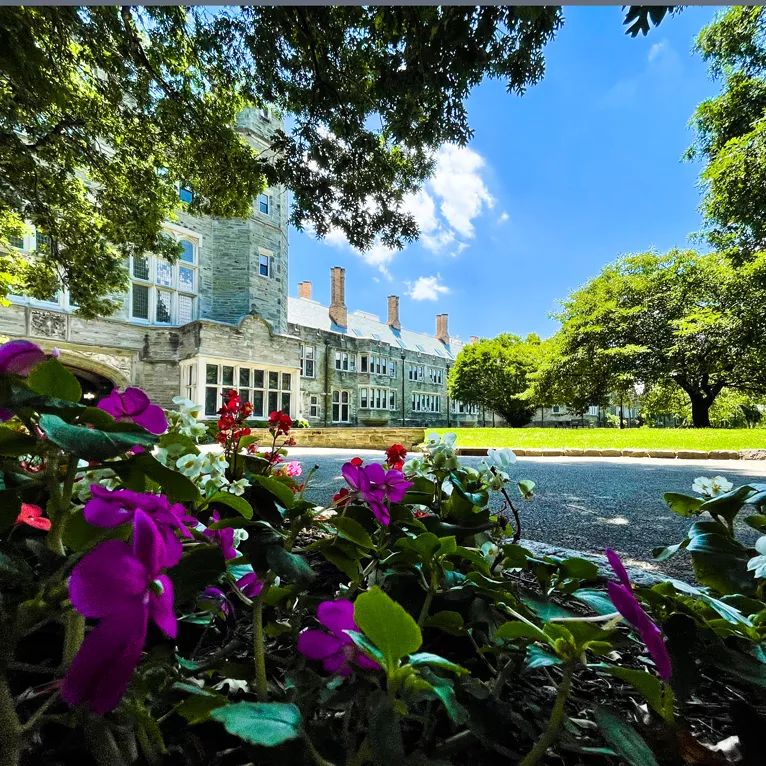Program Requirements and Opportunities
Published annually, the Course Catalog sets out the requirements of the academic programs--the majors, minors, and concentrations. Each Bryn Mawr student must declare a major before the end of the sophomore year. Students may also declare a minor or a concentration, but neither is required for the A.B. degree. Students must comply with the requirements published in the Course Catalog at the time when they declare the major, minor and/or concentration.
The Course Catalog also sets out the College requirements. Students must comply with the College requirements published at the time they enter Bryn Mawr College.
For more information, visit the Catalog Homepage to view the current content. To view Catalogs from previous academic years, visit the Catalog Archives page.
Students may complete a major or minor in Growth and Structure of Cities. The interdisciplinary major challenges students to understand the dynamic relationships connecting urban spatial organization and the built environment with politics, economics, cultures and societies worldwide. Core introductory classes integrate varied analytic approaches that explore issues of changing forms of the city over time and explore the variety of ways through which people have re-created global urban life across history and across cultures. With these foundations, students pursue their interests through classes in architecture, urban social and economic relations, urban history, studies of planning and the environmental conditions of urban life. Engagement with Philadelphia is an integral part of the curriculum with almost each Cities course requiring site visits and class trips within the region. Advanced seminars further ground the course of study by focusing on specific cities and topics. Opportunities for internships, volunteering, and study abroad also enrich the major.
Complementing the major, students may also choose to do a minor or a second major that allows them to expand upon their focus in Cities with more specialized knowledge, whether in Environmental Studies, Economics, International Studies, Political Science or studies of language and culture. Students also may apply for the 3-2 Program in City and Regional Planning in their junior year, offered in cooperation with the University of Pennsylvania, after filling prerequisites there.
Major Requirements
A minimum of 15 courses (11 courses in Cities and 4 allied courses in related fields) is required to complete the major.
The 4 core requirements include: CITY 185 (Urban Culture and Society) and 190 (Form of the City: Histories of the Built Environment) comprise the two-semester introductory sequence. CITY 229 is a writing intensive course on urban topics. CITY 253, 254, and 255 represent architectural history topics, one of which is required.
4 intermediary courses from the department or cross-listed courses are required. This is opportunity to develop methodological and research skills as well as to address topical interests. Examples include: CITY 201 (Geographical Information Systems), CITY 207 (Philadelphia), CITY 217 and 218 (Social Science Quantitative and Qualitative Research Methods) or CITY 226 and 228 (Architectural Design Studio sequence).
2 upper-level seminars are required to home in on a particular topic of interest, and they may include CITY 350, Praxis seminars that collaborate with community groups or organizations, CITY 378, a seminar on the built environment, or CITY 360, which has had many iterations addressing topics such as urban development and law, new urbanism, and incarceration.
CITY 398 is the senior thesis seminar, a requirement for the major and completed in the fall semester of the final year. Students are encouraged to apply for summer research funding the summer before that fall semester. The project comprises of a 40-60 page written text on a topic of choice, based on primary documents and original research and/or design. Students interested in developing an architectural proposal also have the option of completing an architectural thesis which is for 1.5 credits and requires approval from one of the studio instructors. Students who double major with a department that requires a thesis can discuss alternatives to writing two theses.
The remaining 4 allied courses are determined in consultation with a major advisor. These courses can be outside of the Cities department and are intended to give the student an opportunity to include classes related to their interests with the major. For example, students who intend to apply to architecture schools may count Physics and Math courses. Or students who are applying to the 3-2 program, may count their prerequisites from the University of Pennsylvania.
Minor Requirements
Requirements for a minor in the Cities department comprise a minimum of 8 courses. They must include the 4 core requirements: CITY 185, CITY 190, CITY 229, and CITY 253, 254, or 255. And a choice of 2 intermediary courses and 2 upper-level seminars among the Cities course offerings or any of the cross-listed courses.
3-2 Program in City and Regional Planning
Majors may apply for the 3-2 Program in City and Regional Planning, offered in conjunction with the Stuart Weitzman School of Design at the University of Pennsylvania. Students interested in this program should meet with faculty early in their sophomore year. They will be required to take CITY 207 (GIS) as well as other courses in planning at the University of Pennsylvania to be eligible.
Cooperation with Other Programs
The Growth and Structure of Cities Department regularly contributes to other departments and programs at Bryn Mawr, Haverford, and Swarthmore, including Africana Studies, Education, Environmental Studies, Gender and Sexuality Studies, Health Studies, History, History of Art, International Studies, Middle Eastern Central Asian Near Eastern Studies, Peace and Conflict Studies, Political Science, and Sociology. The department also partners with Tri-College in Philly and Praxis programs, including internships with organizations in the Greater Philadelphia area.

Contact Us
Department of Growth and Structure of Cities
Old Library
Bryn Mawr College
101 N. Merion Avenue
Bryn Mawr, PA 19010
Phone: 610-526-5334